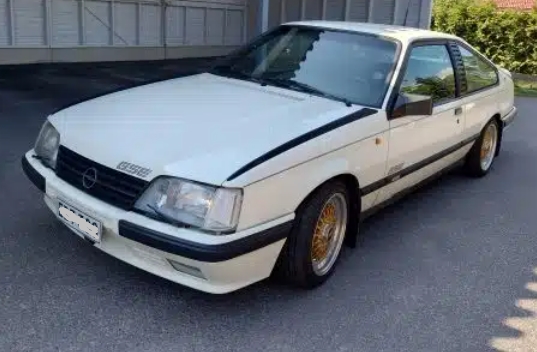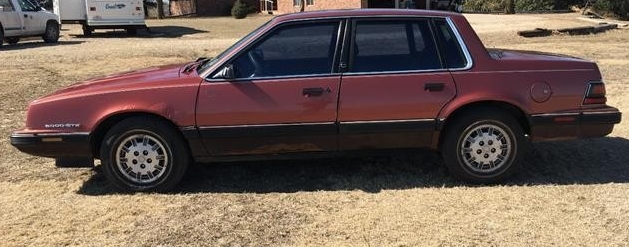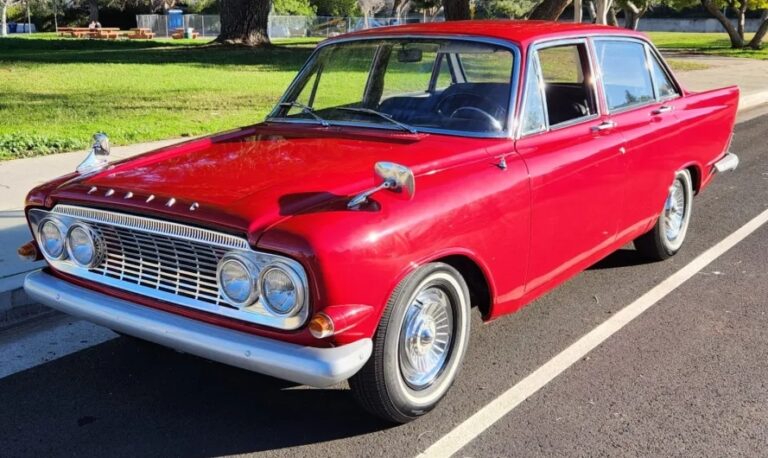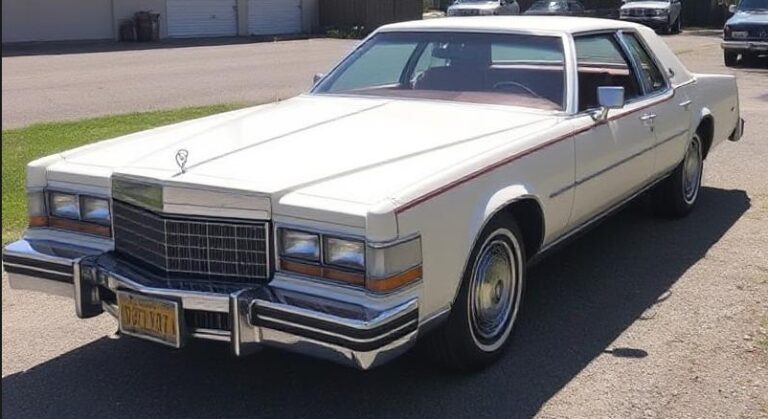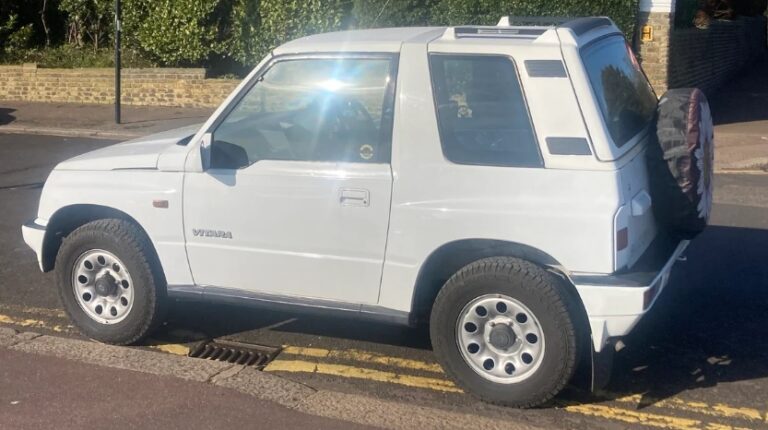The Gentleman’s Express: The Complete Evolution of the Opel Monza
In the grand tapestry of automotive history, certain cars carve out a niche not through sheer sales volume or revolutionary technology, but through a unique blend of style, performance, and character. They become cult classics, revered by those who appreciate their specific mission. The Opel Monza is one such car. A grand tourer in the truest sense, it was Opel’s flagship coupé of the late 1970s and 1980s, a machine designed to devour continental highways with a level of comfort, space, and straight-six authority that set it apart. This is the story of its evolution, from its confident debut to its final, technologically advanced incarnation.
The Genesis: The Monza A1 (1978–1982)
The stage was set at the 1977 Frankfurt Motor Show. General Motors’ German subsidiary, Opel, was on a product offensive. It unveiled a new trio of large, rear-wheel-drive cars built on a shared platform: the luxurious Senator A saloon, the workhorse Rekord E, and the sleek, fastback coupé that stole the show—the Monza.
The Monza was designed to be the aspirational halo car for the brand, a direct competitor to the likes of the Ford Granada/Capri line and a more accessible alternative to the prestigious BMW 6-Series. Its design was a masterclass in late-70s elegance. Penned by Opel’s legendary designer George Gallion, it featured a long, commanding bonnet, a pillarless side profile (with the windows down), and its most defining feature: a vast, all-glass hatchback. This not only gave the car a distinctive look but also endowed it with a level of practicality unheard of in the grand touring coupé segment, offering up to 1,450 litres of luggage space with the rear seats folded.
The Monza A1 shared its underpinnings and front-end styling directly with the Senator A. This meant it inherited a sophisticated chassis for its time, featuring MacPherson struts at the front and, crucially, independent semi-trailing arms at the rear—a setup that provided a superb balance between a comfortable ride and secure, predictable handling.
Models and Trim Levels (A1):
Upon its launch in early 1978, the Monza A1 was offered with a lineup of robust, carburetted and fuel-injected straight-six engines, all from Opel’s proven Cam-in-Head (CIH) family.
Monza 2.8 S: The entry point to the range. This model featured a 2.8-litre inline-six engine fed by a Solex 4A1 downdraft carburetor. It produced a respectable 140 PS (138 hp) and was aimed at buyers who wanted the style and space of the Monza without the higher running costs of the larger engines.
Monza 3.0 S: A step up, this model used a 3.0-litre version of the same CIH engine, again with a carburetor. Power was increased to 150 PS (148 hp), offering more low-end torque and a more relaxed cruising ability.
Monza 3.0 E: The flagship of the initial lineup. The ‘E’ stood for Einspritzung (injection), signifying the fitment of a Bosch L-Jetronic fuel injection system. This was the performance model, boosting the 3.0-litre engine to a potent 180 PS (178 hp) and 248 Nm of torque. It was capable of reaching over 210 km/h (130 mph), making it a genuine high-speed autobahn cruiser.
Trim Packages:
Opel typically offered distinct trim packages that could be applied to the different engine models, allowing for a degree of personalization.
Standard Trim: The base specification was well-equipped by the standards of the day but featured cloth upholstery, steel wheels with hubcaps, and a more basic dashboard arrangement.
‘C’ Package (Comfort): This popular option elevated the Monza’s luxury credentials. It typically included plush velour upholstery, alloy wheels, a more comprehensive instrument cluster, power windows, and additional sound deadening for a quieter cabin.
‘S’ Package (Sport): Often paired with the carbureted models to create a sportier feel, the ‘S’ package included firmer suspension, distinctive alloy wheels, a leather-wrapped steering wheel, and often sportier seat designs. On the 3.0 E, many of these features were standard or part of an enhanced package that solidified its sporting credentials.
Notably, in the United Kingdom, the Monza was sold under the Vauxhall badge as the Vauxhall Royale Coupé, identical in every way except for the grille and badging. This strategy was common for GM in Europe at the time.
The Monza A1 was praised for its cavernous interior, comfortable ride, and stable handling. However, its interior, also shared with the Senator and Rekord, was often criticized for its extensive use of hard plastics, which felt somewhat out of place in a car with such grand touring aspirations. This was a critique Opel would take to heart.
The Update: The Monza A2 (1982–1986)
In late 1982, for the 1983 model year, Opel introduced a significant facelift for the entire Senator/Monza line, creating the A2 generation. The update was comprehensive and aimed squarely at modernizing the car’s aesthetics and addressing the criticisms of the interior.
Externally, the chrome-heavy look of the 70s was gone. It was replaced by a smoother, more aerodynamic front end with a body-colored grille, revised, wider headlights, and large, integrated plastic bumpers that gave the car a lower, more contemporary stance. Subtle changes to the rear lights and trim completed the exterior transformation.
The most dramatic change, however, was inside. The old dashboard was completely discarded in favor of a much more modern, driver-focused cockpit. The materials were of a higher quality, the ergonomics were improved, and the entire design felt more sophisticated and worthy of a flagship model.
Models and Trim Levels (A2):
The engine lineup was also rationalized, reflecting the impact of the 1979 oil crisis and a demand for greater efficiency.
Monza 2.0 E: A new entry-level model was introduced, featuring the 2.0-litre four-cylinder CIH engine with Bosch LE-Jetronic fuel injection, borrowed from the smaller Ascona and Manta models. With 115 PS (113 hp), it offered economy but lacked the effortless character of its six-cylinder siblings.
Monza 2.5 E: Replacing the old carbureted sixes was a new 2.5-litre inline-six with fuel injection. This engine provided a silky-smooth 136 PS (later 140 PS) and became the sweet spot in the range, offering a superb balance of refinement, adequate performance, and reasonable fuel consumption.
Monza 3.0 E: The top-tier 180 PS 3.0-litre injected engine was carried over from the A1, remaining the heart of the performance-oriented models. It continued to offer impressive autobahn performance, now housed in a more modern package.
The Ultimate Expression: The Monza GSE (1983–1986)
With the A2 facelift came the model that would cement the Monza’s legacy: the Monza GSE. This was not just a trim level; it was a distinct, performance-oriented model that stood at the pinnacle of the range. The GSE package was exclusively available with the 180 PS 3.0 E engine and transformed the Monza from a handsome grand tourer into an aggressive sports coupé.
The GSE’s specification sheet reads like a wish list for any 1980s performance car enthusiast:
Exterior: A full body kit featuring a deep front air dam, side skirts, and a subtle rear spoiler. The chrome trim was blacked-out (shadowline), and it rode on unique, multi-spoke 15-inch alloy wheels.
Interior: The cabin was dominated by a pair of supportive and stylish Recaro sports seats, often finished in a distinctive checkered cloth. A sport steering wheel and a more comprehensive trip computer were also included.
The Digital Dash: The GSE’s party piece was its futuristic liquid crystal display (LCD) digital instrument panel. With glowing bar graphs for the rev counter and auxiliary gauges, and a large digital speedometer, it looked like something straight out of Knight Rider. In an era of analogue dials, this was pure high-tech theatre and remains one of the GSE’s most memorable features.
Performance Hardware: The GSE wasn’t just about looks. It came standard with a 40% limited-slip differential (LSD) to improve traction and handling, along with a firmer, sport-tuned suspension that sharpened its dynamics without completely sacrificing its grand touring comfort.
The GSE was Opel’s definitive statement, a car capable of challenging the BMW 635CSi and Ford Capri 2.8i on both style and performance. It was fast, comfortable, practical, and brimming with 80s technological cool.
.

.
The End of an Era
Despite the success and desirability of the GSE, the Monza’s days were numbered. By the mid-1980s, the market was shifting. Large, rear-wheel-drive coupés were becoming a smaller niche, and production costs were high. When Opel developed the next-generation Senator B, a decision was made not to engineer a corresponding coupé version.
Production of the Opel Monza ceased in August 1986. There was no direct replacement. Opel’s coupé torch would later be passed to the much smaller, front-wheel-drive, four-cylinder Calibra in 1989—a very different car for a very different time.
The Opel Monza, across its nine-year lifespan, represented the last of a breed for the brand: the large, six-cylinder, rear-wheel-drive flagship coupé. From the simple, elegant 2.8 S of 1978 to the digitally-dashed, body-kitted GSE of 1986, it evolved from a handsome cruiser into a formidable sports GT. Today, it stands as a testament to an era when comfort, space, and a smooth straight-six engine were the ultimate ingredients for the perfect gentleman’s express.
